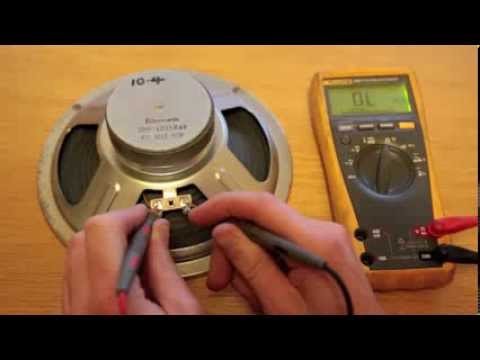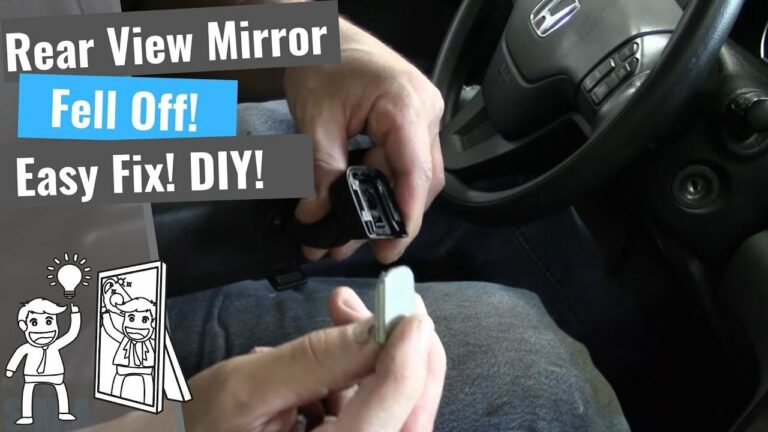Quick And Easy Speaker Test: How To Check If A Speaker Is Working
If you’re wondering how to test if a speaker is working, fret not! We’ve got you covered. Nobody likes the disappointment of plugging in their speakers, only to be met with silence. That’s why it’s essential to know the simple steps to ensure everything is functioning as it should. In this article, we’ll walk you through the process of testing your speaker to ensure it’s producing sound like it should. So let’s dive in and get those speakers working in no time!
How to Test if a Speaker is Working:
A speaker is an essential component of any audio system, whether it’s a home theater, car stereo, or personal computer setup. It allows us to enjoy music, movies, and other audio content with rich sound quality. However, there may be situations where you encounter issues with your speaker and wonder if it’s still functioning correctly. In this guide, we’ll take you through various methods to test if a speaker is working properly. Follow these steps to troubleshoot and diagnose any problems you may be experiencing.
Visual Inspection
Before diving into more technical tests, start with a visual inspection of the speaker. This step may help identify any obvious physical damage or loose connections. Here’s what you should look for:
- Check for any visible tears or holes in the speaker cone or surround. These damages can significantly affect sound quality.
- Inspect the speaker’s connectors or terminals for loose or disconnected wires. If you find any, ensure they are properly connected.
- Verify that all cables and connections leading to the speaker are securely plugged in.
Audio Source Testing
To determine if a speaker is working, you need to test it with an audio source. Most commonly, this involves playing some audio through the speaker and listening for any sound output. Follow these steps:
- Play a known-good audio source, such as a song or a podcast, on a device connected to the speaker.
- Start with the volume set at a moderate level, gradually increasing it to a higher level.
- Listen closely for any sound coming from the speaker.
If you don’t hear anything, follow the next steps to investigate further.
Speaker Connections
The speaker’s connections are crucial for proper functionality. If the speaker is not connected correctly, it may not produce any sound. Here’s what you can do:
- Check the audio source’s connection to the speaker. Ensure the cable is firmly connected to both the audio output and the speaker’s input.
- If you’re using a wired speaker, ensure the cable is not damaged or frayed. Try using a different cable if available.
- If you’re using a wireless speaker, check that the speaker is properly paired with the audio source. Refer to the speaker’s user manual for instructions on pairing.
- For multi-speaker setups, verify the correct channel connections. Make sure each speaker is connected to the appropriate audio output.
Speaker Power
A speaker won’t work without power. Therefore, it’s important to ensure the speaker has adequate power supply. Follow these steps to check the power:
- Verify that the speaker is properly plugged into a power source or has a fully charged battery, depending on the type of speaker.
- Confirm that the power source is working correctly. Try plugging another device into the same outlet or using a different power cable.
- For active speakers, ensure that any power switches or buttons are turned on. Some speakers have separate power controls for different components like subwoofers.
Sound Settings and Controls
Sometimes, the speaker may appear to be functioning correctly, but no sound is produced due to incorrect sound settings or control adjustments. Here’s what you can do:
- Check the volume settings on both the audio source and the speaker. Make sure they are set to an audible level.
- Ensure that no mute or silence mode is enabled on either the audio source or the speaker.
- Explore the sound settings of the audio source. Some devices may have additional settings, such as spatial audio enhancements or virtual surround sound, that need adjustment.
Swap Speaker Connections
If you have multiple speakers connected to the audio source, swapping their connections can help identify if the issue lies with the speaker itself or the audio source. Follow these steps:
- Disconnect the problematic speaker from the audio source.
- Connect a different speaker to the same audio output previously used by the problematic speaker.
- Test the audio source with the new speaker and see if it produces sound.
- If the alternative speaker works properly, it suggests the original speaker may have a problem.
Speaker Driver Testing
A speaker driver is responsible for converting electrical signals into sound waves. If the driver malfunctions, it may cause issues with sound production. Here’s how to test the integrity of the speaker driver:
- Use a multimeter in resistance mode to measure the speaker driver’s resistance, which is usually indicated in ohms. Refer to the speaker’s specifications for the expected resistance value.
- If the measured resistance significantly deviates from the expected value or shows open circuit (no continuity), it indicates a faulty driver that may need repair or replacement.
External Disturbances
External factors can sometimes affect the speaker’s performance. It’s essential to consider these disturbances when troubleshooting speaker issues. Here are some possible external factors to investigate:
- Check for any physical obstructions around the speaker that might be blocking sound output.
- Ensure that the speaker is not placed too close to walls or corners, as this can result in sound reflections and distortions.
- Investigate if there are any electromagnetic devices nearby that could interfere with the speaker’s functionality. Move the speaker away from such devices.
Speaker Repair or Replacement
If none of the previous steps resolved the issue, and the speaker is still not working, it may require professional repair or replacement. Here are some signs that indicate it’s time to seek expert assistance:
- Physical damages to the speaker components that cannot be easily repaired.
- Signs of burnt or damaged circuits inside the speaker.
- Persistent issues even after attempting various troubleshooting methods.
- Warranty coverage that allows for a free repair or replacement.
How to test if speaker is damaged
Frequently Asked Questions
How can I test if a speaker is working?
To test if a speaker is working properly, follow these steps:
1. Check the physical connections: Ensure the speaker is properly connected to the audio source, and the cables are securely plugged in.
2. Adjust volume settings: Make sure the volume is turned up and not muted on both the audio source and the speaker.
3. Test with different audio sources: Try playing audio from multiple devices, such as a smartphone, laptop, or MP3 player, to see if the issue is specific to one source.
4. Inspect the speaker drivers: Visually inspect the speaker drivers for any damage or obstructions that could affect sound output.
5. Use headphones for further testing: Connect headphones to the same audio source to determine if the issue lies with the speaker or the audio source.
If the speaker still does not produce sound after these steps, it may require further troubleshooting or repair.
Why is there no sound coming from my speaker?
If you’re not hearing any sound from your speaker, there are a few possible reasons:
1. Volume settings: Check that the volume is not muted or set too low on both the audio source and the speaker itself.
2. Faulty connections: Ensure the cables connecting the speaker to the audio source are securely plugged in and not damaged.
3. Audio source selection: Verify that the correct audio source is selected on both the audio device and the speaker itself, if applicable.
4. Speaker power: Ensure the speaker is powered on and receiving electricity. Check for any power indicators on the speaker.
If these troubleshooting steps don’t resolve the issue, there might be a problem with the speaker that requires further attention.
Can I test a speaker without an audio source?
Yes, you can test a speaker without an audio source by performing a simple physical inspection. Gently tap the speaker cone with your fingertip. If the speaker is working correctly, you should hear a soft popping sound. This test helps determine if the speaker cone is moving freely and producing sound. However, to fully verify the performance of the speaker, it’s recommended to connect it to an audio source and play some audio.
What are some common indicators that a speaker is not working?
Common indicators that a speaker is not working include:
1. No sound output: When there is no audio coming from the speaker despite the audio source being active.
2. Distorted sound: If the sound produced by the speaker is unclear, crackling, or distorted, it may indicate a problem.
3. Intermittent sound: When the speaker produces sound inconsistently or cuts in and out unexpectedly.
4. Lack of power: If the speaker does not power on or show any signs of receiving electricity.
If you notice any of these signs, it’s important to troubleshoot the issue or seek professional help if necessary.
Can I use another speaker to test if my speaker is working?
Yes, using another speaker to test if your speaker is working is a useful troubleshooting step. Simply connect the alternative speaker to the same audio source and check if it produces sound. If the alternate speaker works fine, it suggests that the original speaker may have an issue. However, if the alternate speaker also has the same problem, the issue may lie with the audio source or its settings.
What should I do if my speaker is still not working after testing?
If your speaker is still not working after performing the basic tests, it may require further attention. Consider the following actions:
1. Consult the user manual: Review the user manual for troubleshooting tips specific to your speaker model.
2. Contact customer support: Reach out to the manufacturer’s customer support for guidance or to initiate a return or repair process if the speaker is under warranty.
3. Seek professional repair: If the speaker is not under warranty or you prefer professional assistance, take it to a certified technician or an authorized service center for diagnosis and repair.
Final Thoughts
In conclusion, testing whether a speaker is working can be done by following a few simple steps. Firstly, ensure that the speaker is properly connected to the audio source and power supply. Secondly, check the volume settings on both the audio source and the speaker itself. Thirdly, try playing audio from different sources to eliminate any potential issues with the audio file. Additionally, inspect the speaker physically for any visible damage or loose connections. By following these steps, you can easily determine if a speaker is functioning properly. Remember, testing the functionality of a speaker is crucial to ensure optimal audio experience.





